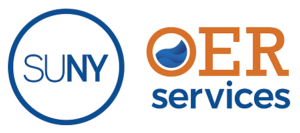Note for instructors continuing from the six module version of Spanish 1: You will notice that Spanish 2 has 12 modules, whereas Spanish 1 had 6. However, the pedagogical format of the course is the same as Spanish 1 (for instance, Cultura sections and Writing assignments appear every other module, such that the two modules together are structured like one module in Spanish 1). We made this change in order to be able to get more granular assessments of students’ progress (with twelve shorter modules, the quizzes are more targeted), as well as to provide greater customization options for instructors. For instance, instructors who don’t want to cover the conditional could delete Module 24, but still have the present perfect and future tense from Module 23. Likewise, we’ve broken the modules into smaller sections, so that the tiles could be removed– for instance, if faculty do not want to use a particular set of vocabulary.
Pedagogical Foundations and Features:
Waymaker Spanish 1 and 2 offer a comprehensive introductory Spanish sequence, providing guidance and practice in reading, writing, listening to, and speaking Spanish. Each module includes thematic vocabulary, sequenced grammar instruction, numerous self-check drills and exercises, open-form communicative activities, scaffolded writing assignments, and reading passages exploring various aspects of life and culture in the Spanish-speaking world. Each grammar section is introduced by a short reading passage to highlight new structures and patterns within their linguistic context. Within each lesson, self-grading practice activities with targeted feedback allow students to learn by doing and track their level of mastery. The text is accompanied by engaging images and videos throughout, and all vocabulary and reading passages include audio files to practice pronunciation and listening comprehension.
About Our Team:
 Spanish 2 was designed and developed by the Spanish department at SUNY Oneonta in cooperation with Lumen Learning. This project was supported by SUNY OER Services with funds from New York State’s 2018-2019 budget allocation for Open Educational Resources.
Spanish 2 was designed and developed by the Spanish department at SUNY Oneonta in cooperation with Lumen Learning. This project was supported by SUNY OER Services with funds from New York State’s 2018-2019 budget allocation for Open Educational Resources.
Senior Contributors and Pedagogical Design:
 Erica Brown, SUNY Oneonta
Erica Brown, SUNY Oneonta
Alejandra Escudero, SUNY Oneonta
María Cristina Montoya, SUNY Oneonta
Elizabeth Small, SUNY Oneonta
Faculty Contributors:
Iliana Alcántar
Mayra Cortes-Torres, Pima Community College
Deborah Edson, Tidewater Community College
Elena Grajeda, Pima Community College
Liz Rangel Arriola, Pima Community College
Carlos A. Joloy Carballo
Other Contributors:
Freedom Learning Group, Colton Klein, Jessica DeMadeira, Jacob Dinkel, Julie George
Special Thanks To:
Ed Beck, SUNY Oneonta
Spencer de Vries, Lumen Learning
SUNY OER Services
Acknowledgments
This book has benefited from the contributions of many people, including Maribel Garrett, Jim Lobell, Elizabeth Small, and Joana Wall.
About Lumen
Lumen Learning courseware is based on open educational resources (OER). When we can find well designed, effective OER that are appropriately licensed, we use them in our courseware. When we can’t find pre-existing OER, we create original content and license it as OER (under a Creative Commons Attribution license).
Lumen’s authoring process doesn’t end when our courseware is released. Our choice to adopt open educational resources means that we have the copyright permissions necessary to engage in continuous improvement of our learning content. Consequently, our courses are continually being revised and updated. Errata reported for our courseware are fixed in a matter of days, as opposed to the traditional model in which errors persist until the next “edition” is printed (often a year or more). Students and faculty can suggest improvements to our courses directly from within the courseware as they use it. And we conduct regular analyses to determine where students are struggling the most in our courseware, and make improvements that specifically target these areas.
Given our unique approach, our list of authors and other contributors may look different than the lists you are used to seeing. We provide both a list of the primary content authors (the people involved in the initial creation of the course) and a list of everyone who has contributed suggestions and other improvements to the course since it was first released. We invite you to join us as we create courseware that supports student learning more effectively each semester.
If you’d like to connect with us to learn more about adopting this course, please Contact Us.
You can also make an appointment for OER Office Hours to connect virtually with a live Lumen expert about any question you may have.
